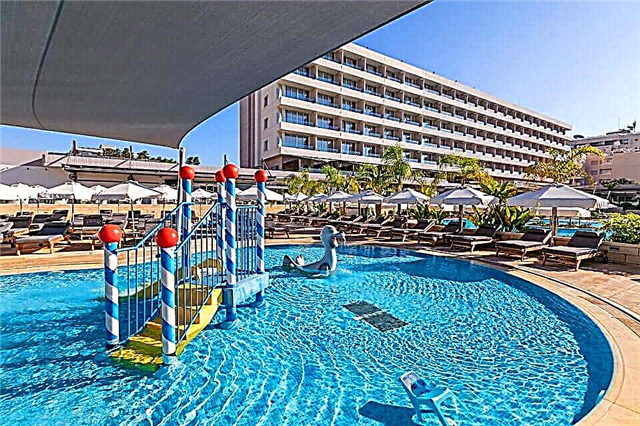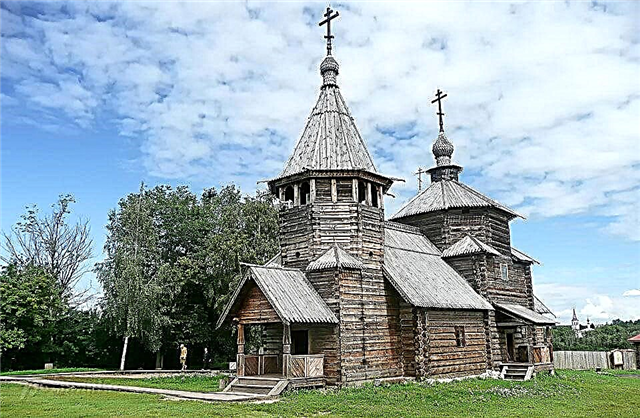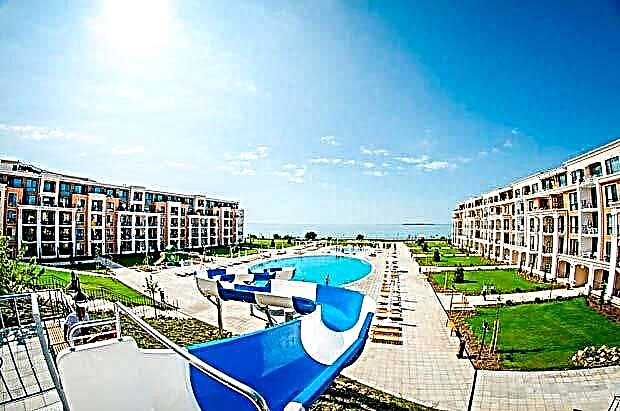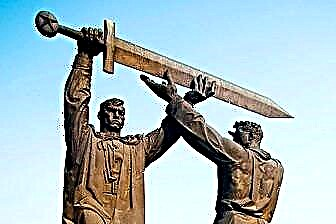The architectural ensemble of the Moscow Kremlin, consisting of bright walls and tall slender towers, is over 500 years old. At one time, its construction was started by Prince Ivan III. The difference in the size and proportions of the towers depended on the location of the structures themselves and their role in defending the city. Each of them had its own exits to the adjacent wall spans, which made it possible to bypass all the walls without descending to the ground. The crowns of the Kremlin buildings were merlons - the so-called swallow tails. They defended the shooters hiding on the upper platforms of the buildings. Today residents and guests of Moscow can see 20 towers.
All the towers had to go through a lot of historical events. They especially suffered in the war of 1812, when explosions now and then turned defensive structures into piles of stones. A lot of work has been done to restore them. The appearance, which the residents and guests of Moscow contemplate, the buildings owe to the competent actions of the architect Bove O.I.
While working on the restoration of the Kremlin complex, the craftsmen managed to emphasize its antiquity and add romance. Some of the towers were decorated in a medieval style. The bastions, built under Peter I, were liquidated, and the moat that crossed Red Square was buried.
Taynitskaya tower

In the process of building the Kremlin, it was laid first... And the structure received this name because of an underground secret passage that connected it to the river. The move itself was needed to supply water to the fortress in case of its prolonged siege by enemies.
The tower stretches almost 39 m high. Its design has undergone many changes due to the restoration due to the destructive flight of the Napoleonic army. In the 40s of the XX century. The arrow was finally dismantled, the well was filled up, and the gate was laid.
Vodovzvodnaya (Sviblova) Tower

So she was named because of the boyar Sviblov and because of the mechanism that raised water from the well. Life-giving moisture came from the underworld into a huge tank at the very top of the pylon. The water supply system worked for a long time, until the car was dismantled and transported to St. Petersburg. In this city, it was used to fill fountains. The length of the structure together with the star is equal to 61.45 m. During its restoration, pseudo-Gothic and classical components were introduced - rustic, decorative mashiculi and huge windows.
Borovitskaya tower

On Borovitsky Hill, which in ancient times was covered by the shade of a pine forest, there is a 54-meter building with a star. Its second name is the Forerunner. The tower was intended to meet the needs of the Konyushenny and Zhitny dvor located nearby.
She had a driveway, but they played the role of the back gate of the great Kremlin. The top of the pylon is equipped with an open octagon and an imposing stone tent.
Armory tower

In ancient times, weapons workshops were adjacent to it. Here, craftsmen made jewelry and dishes. The former name of the tower is Konyushennaya, due to its former proximity to the Tsar's Konyushennaya court. It was named Armory in 1851, when the Armory Chamber appeared at the Kremlin - a repository of treasures, ancient things and uniforms of ancient Russian warriors... You can approach the 32-meter object from the extreme part of the Alexander Garden.
Trinity Tower

After Spasskaya, it was listed as the second in the severity of defense and was the tallest among all the towers. At the base of the 6-tier quadrangle of this pylon is a 2-tier basement with strong walls. Ladders are provided for easy movement between the tiers. This tower had several names. From Epiphany, Znamenskaya and Karetnaya by the royal decree, it turned into Trinity because of the neighboring courtyard of the Trinity Monastery. Together with the star, the structure rises 80 m.
Kutafya (bridgehead) tower

Surrounded by a moat and a river, it rises at the Trinity Bridge. The low pylon had one gate, which, as necessary, was closed by the lifting section of the bridge. So the structure created a barrier to the besieging of the fortress.
Its power consisted in the presence of loopholes of the plantar battle and mashicules. To get to the territory of the tower from the side of city streets, Muscovites had to drive along an inclined bridge. Now the two-colored 13-meter turret organically complements the Kremlin ensemble.
Corner Arsenalnaya (Sobakin) tower

Its bottom array is represented by 16 faces and an extended base. There is a basement under the tower, which can be reached by an internal staircase. There is a well with potable water in the underground. Sobakin's design was named because of the courtyard of a boyar with the surname Sobakin. In the XVIII century. after the construction of the Arsenal, the tower with the well was renamed into the Corner Arsenal.
Medium Arsenalnaya (Faceted) Tower

Entered the Kremlin complex in 1495. Later, a grotto was erected with her - a landmark of the Alexander Garden... The outer edge of the pylon is divided by flat niches. The quadrangular top is crowned with machicules and is equipped with a parapet with caissons (recesses for carved decorations). The inner part of the structure is represented by 3 tiers, covered with cylindrical vaults. They are provided with in-wall stairs. The entire structure is completed by a through observation tower and a tent.
Commandant (Kolymazhnaya) tower

A deaf, austere structure to the south of the Trinity Tower. Its appearance as part of the Kremlin dates back to 1495. The Kolymazhny tower was named because of the proximity of the Kremlin Kolymazhny yard. But when the commandant of the capital settled in the Amusement Palace, and this happened already in the 19th century, the tower was renamed accordingly.
Tsar tower

Conveniently located between the Spasskaya and Nabatnaya towers. A tower-like structure on the Kremlin wall appeared in 1860.
Four pitcher-like pillars hold an octagonal tent decorated with a gilded weather vane. Once from it came the ringing of the bells of the fire service. The tower did not undergo significant changes. Its height is about 17 m with a weather vane.
Petrovskaya (Ugreshskaya) tower

It appeared as the Kremlin's military-defensive system improved. The name of the building was given by the church of Metropolitan Peter, standing at the courtyard of the Ugreshsky monastery. The tower was built on and restored after the explosion of a powder charge arranged by the French in 1812.
The purpose of the 27-meter building was to satisfy the household needs of the gardeners, who ennobled the Kremlin territory.
Alarm tower

This deaf strong object stands between the Tsarskaya and Konstantino-Eleninskaya towers. The basement tier of its interior is represented by a complex multi-chamber system, combined with the undercarriage of the walls by means of stairs. Bells once rang in the hipped top-tetrahedron. As instruments of the Spassky alarm, they notified the people of the fire. The alarm bell of 150 pounds was cast by a noble craftsman of that time Ivan Motorin.
Senate tower

Since 1491, the tower has been standing on Red Square between the Nikolskaya and Frolovskaya defensive buildings. Until the end of the 18th century. it had no name until in 1790 the Senate building appeared in the Kremlin. The inner volume of the tower is divided into 3 tiers of rooms with vaults. The originally square, blank structure was completed in 1680 with a stone tent and a gilded weather vane. The total height of the building is 34.3 m.
Spasskaya (Frolovskaya) tower

It is located near the main gate, which in ancient times had a special passage to the Kremlin. The structure was erected to protect the northeastern corner of the ensemble, which had no water barriers. In the XVII century. the tower was decorated with the sovereign coat of arms in the form of a two-headed eagle. The clock hung on the structure in the 60s of the XIX century adorns it now... The architecture of the pylon differed from the plan of the surrounding buildings by the precision of proportions, the luxury of decoration of the facades and figurines of mythical animals. The four corners are in harmony with the nice looking pyramids with shining weather vane.
Konstantino-Eleninskaya tower

Erected in 1490, it is located in the place of the former passage structure. The townspeople and regiments passed through it, and Prince Donskoy himself went through this tower to take battle on the Kulikovo field, in the 2nd half of the 14th century. The structure acted as a security combat facility ensuring the safety of Veliky Posad and the routes leading from the river pier. Tracks from adjacent streets were also monitored. The pylon was equipped with a passage gate and a diverter arrow. One could get to it via a drawbridge that stretched over the moat. The building got its new name thanks to the neighborhood of the Church of Constantine and Helena.
Beklemishevskaya (Moskvoretskaya) tower

The round tower is located near the Moskvoretsky bridge and is perfectly visible from Red Square. Once the defender deflected the blows of the advancing enemies. A cache was arranged under it. In the XVII century. the pylon was built on with a beautiful tent, which endowed it with slender forms and saved it from the severity of serfdom.
In connection with the unfolding of the actions of the Russian-Swedish war, bastions appeared around the structure, and the width of the loopholes was made larger. In 1949, a large-scale restoration of the tower also included the loopholes - they were brought back to their original form.
Annunciation tower

If you believe the legend, the building with a deep underground got this name because of the icon "Annunciation", allegedly hanging in it in antiquity. Historians also link the name of the tower with the fact that the Church of the Annunciation was built with it, which was destroyed by decree of the Soviet government. In the vicinity of the pylon, the Portomoy Gates were built, through which the palace washerwomen hurried to the Moscow River to caress their linen. Over time, these gates were tightly sealed up. Together with the weather vane, the tower structure goes into the sky by 32 m.
Nikolskaya tower

Located in the northern part of the Moscow Kremlin. In the old days, its powerful quadrangle was equipped with a passage gate, a diverter arrow and a lifting ferry. The name of the tower comes from the image of St. Nicholas hanging over the passageway of the strelnitsa. The population passed through the gates to the Kremlin, heading for the monastery courtyards and courtyards of the nobility. An octagon with "lace" of white stone elements is considered to be the decoration of the tower. An additional part with a tent conveys the Gothic style of architecture. During the battles with Napoleon's army, the tower was partially destroyed, but later it was restored. The newly built iron tent is decorated with white stone turrets in the corners.
First Nameless Tower

Adjacent to Taynitskaya and is a deaf building. In the XV - XVI century. she served as a repository of gunpowder... In 1547 the pylon completely burned down in a fire, but in the 17th century. it was rebuilt anew and supplemented with a tier with an interesting name: "tent". When the government started to build a luxurious Kremlin palace, the object was liquidated. As soon as the work that was entrusted to the architect Bazhenov was over, it was decided to work on the structure again. As a result, the beauty of the Kremlin was complemented by another object, the exact height of which is 34.15 m.
Second Nameless Tower

Since 1680, the tower has acquired even greater architectural attractiveness, as it was completed with a 4-sided tent and equipped with an observation post-tower. The stone structure is neatly crowned with a tent with a weather vane.











